
Darkling beetle is the common name for members of the beetle family Tenebrionidae, comprising over 20,000 species in a cosmopolitan distribution.

Tenebrio obscurus, or the dark mealworm beetle, is a species of darkling beetle whose larvae are known as mini mealworms. These insects should not be confused with younger mealworms or with the confused flour beetle.

Lamiinae, commonly called flat-faced longhorns, are a subfamily of the longhorn beetle family (Cerambycidae). The subfamily includes over 750 genera, rivaled in diversity within the family only by the subfamily Cerambycinae.

Flour beetles are members of several darkling beetle genera including Tribolium and Tenebrio. They are pests of cereal silos and are widely used as laboratory animals, as they are easy to keep. The flour beetles consume wheat and other grains, are adapted to survive in very dry environments, and can withstand even higher amounts of radiation than cockroaches. They are a major pest in the agricultural industry and are highly resistant to insecticides.

Eleodes is a genus of darkling beetles, in the family Tenebrionidae. They are endemic to western North America ranging from southern Canada to central Mexico with many species found along the Mexico-United States border. Some species have been introduced to Colombia. The name pinacate is Mexican Spanish, derived from the Nahuatl (Aztec) name for the insect, pinacatl, which translates as "black beetle."
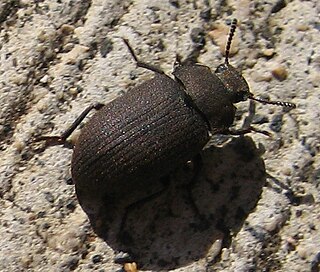
Opatrini is a tribe of darkling beetles (Tenebrionidae) in the subfamily Tenebrioninae.
Trachelostenus is a genus of darkling beetles in the family Tenebrionidae. It is native to the Valdivian forests of Chile, and has at least two species, T. inaequalis (Solier) and T. fascicularis (Philipp). It was historically considered the only member of the family Trachelostenidae, but a 2015 study sunk the genus into the tenebrionid subfamily Tenebrioninae.

The Sepidiini is a tribe of ground-dwelling darkling beetles (Tenebrionidae), that occurs across Africa, the Mediterranean Basin, the Arabian Peninsula and Mesopotamia. It is composed of many hundreds of species. The larvae of some species are known to damage crops.

Triboliini is a tribe of darkling beetles in the family Tenebrionidae. There are about 10 genera in Triboliini.
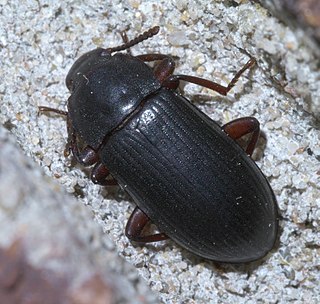
Tenebrionini is a tribe of darkling beetles in the family Tenebrionidae. There are at least 20 genera in Tenebrionini.

Asidini is a tribe of darkling beetles in the subfamily Pimeliinae of the family Tenebrionidae. There are more than 30 genera in Asidini.

Blaptinae is a subfamily of darkling beetles in the family Tenebrionidae. There are around 300 genera in Blaptinae, divided into 7 tribes.

Coniontini is a tribe of darkling beetles in the subfamily Pimeliinae of the family Tenebrionidae. There are at least 4 genera in Coniontini, found in North America.
Trachelostenini is a tribe of darkling beetles in the family Tenebrionidae. There are at least three genera in Trachelostenini. It was historically ranked as the family Trachelostenidae, but a 2015 study sunk the family into the tenebrionid subfamily Tenebrioninae.

Amphidorini is a tribe of darkling beetles in the family Tenebrionidae. There are six genera in Amphidorini.
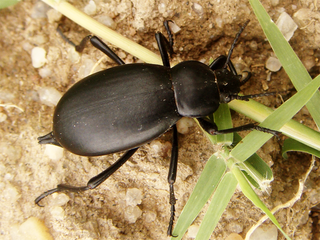
Blaptini is a tribe of darkling beetles in the family Tenebrionidae. There are more than 30 genera recognised in the tribe Blaptini.
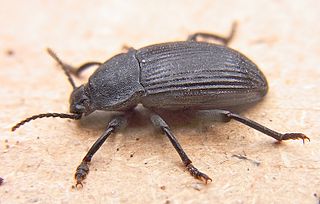
Dendarini is a tribe of darkling beetles in the family Tenebrionidae. There are more than 30 genera in Dendarini.

Pedinini is a tribe of darkling beetles in the family Tenebrionidae. There are about 19 genera in Pedinini.
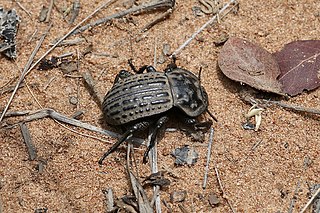
Platynotini is a tribe of darkling beetles in the family Tenebrionidae. There are more than 70 genera in Platynotini.

Platyscelidini is a tribe of darkling beetles in the family Tenebrionidae. There are about eight genera in Platyscelidini.


























